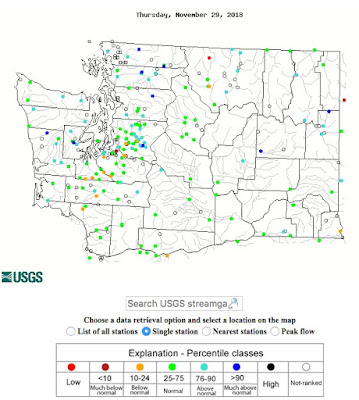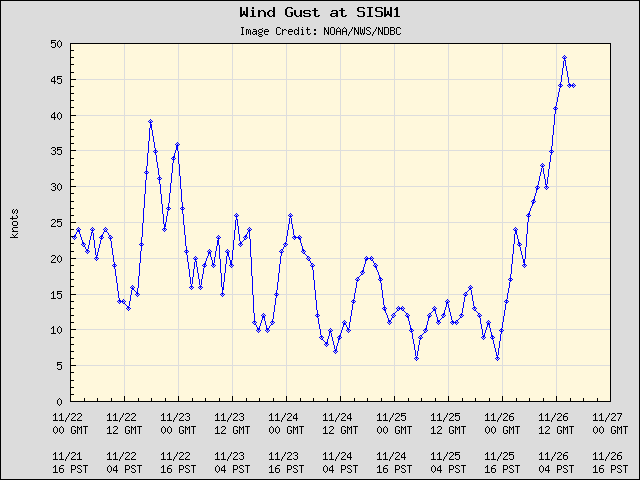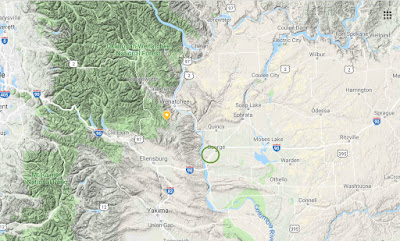The Camp Fire that struck the northern California town of Paradise and vicinity is a profoundly disturbing environmental disaster of first magnitude. Nearly 100 people have lost their lives, approximately 10,000 homes have been lost, a major community has essentially been destroyed, and millions of people have been exposed to high concentrations of smoke. Tens of thousands of people have been displaced and lives of millions substantially affected.
And beyond the heart-wrenching losses noted above, it is doubly tragic that this disaster was both foreseeable and avoidable, resulting from a series of errors, poor judgment, lack of use of available technology, and poor urban planning.
It is more than unfortunate that some politicians, environmental advocacy groups, and activist scientists are attempting to use this tragedy as a tool for their own agenda, make the claim that the Camp Fire was result of global warming.
As I will discuss below, this claim has little grounding in fact or science. Global warming is a profoundly serious threat to mankind, but it has little impact the Camp Fire and many of the coastal California fires of the past few years (e.g., the Wine Country Fires of October 2017). And blaming global warming takes attention away from the actions needed to prevent such tragedies from happening again.
Analyzing the Origins of the Camp Fire
Winds
A central causative factor was the strong, offshore-directed, winds that both initiated the fire and drove it rapidly towards the town of Paradise. These winds are known as Diablo winds, and are driven by the difference in pressure between the intermountain interior (e.g., Nevada) and the coast.
The easterly (from the east) winds that struck that day were not that unusual, something that is evident by looking at the wind climatology at the nearby Jarbo Gap USDA RAWS weather station. The sustained winds on the day of the fire initiation (November 8) accelerated to 32 mph (with gusts to 52 mph), with peak winds at 4 AM that day. Looking at the entire record at Jarbo (back to 2003), northeasterly winds of 30 mph or more have occurred 508 times in those 15 years--not an unusual event. And my inspection of the individual records does not suggest an increasing trend.
Furthermore, there is no reason to expect that Diablo winds will increase under global warming; in fact, the opposite is the case. Global warming preferentially warms the interior of the continent compared to the eastern Pacific. Thus, human-caused warming would tend to
weaken the interior high pressure, thus lessening a key driving force of the Diablo winds. There are several studies in the peer-reviewed scientific literature (e.g.,
this one) that show that global warming should weaken southern California's Santa Ana winds, which are also driven by the pressure difference between the western interior and the coast.
Initiation of the fires
There is strong evidence that that Camp Fire was caused by failure of PG&E powerlines, not by any natural causes that could be linked to global warming. In fact, nearly all wildfires in California are caused by human error or arson. Increased population in California would clearly lead to more human fire initiation. Thus, global warming is not a factor in fire initiation.
Surface dry conditions
One of the most popular handwaving arguments about why global warming is enhancing wildfires is through temperature and precipitation changes. It is argued that warming temperatures are causing more evaporation and thus drying the "fuels" at the surface. And it is argued that global warming is causing increasing drought that dries fuels and encourages fires.
Now this sounds reasonable enough on the surface, but when you examine the facts more closely, it
rapidly becomes clear that global warming has little role in producing the dry conditions that assisted the Camp Fire, the wine country fires, or the fires in coastal southern CA.
The truth is that California is quite dry during nearly half of the year and that fuels such as grasses, bushes and small vegetation dry out during any typical summer. Even more important, virtually all of the fires noted above (including the Camp Fire) were associated with offshore, downslope winds
which rapidly dry out vegetation, even it is wet the day before!
A nearby landscape. Not all the grass and small vegetation
The fire weather community divides fuels by how quickly they dry. 1-h fuels are less than 1/4 of an inch in diameter and can dry in LESS THAN AN HOUR. This includes grass and small weeds/plants. 10-h fuels have diameters of 1/4 to 1 inch and dry in less than 10 hours, and include small bushes, branches, and the like.
In much of California, and particularly in the areas of the fires noted above, most of the fuels were grasses and small stuff--mainly 1 and 10-h fuels. Thus, they dry very quickly, such as when Diablo winds start to blow. This kind of small diameter fuels is known as chaparral in California, and there was a lot of such ground cover north and east of Paradise.
Now let me prove to you that global warming had nothing to do with the dry conditions near Paradise on the morning of November 8. Below is a plot of the ten-hour fuel moisture at the nearby Jarbo Gap observation side, a site that was in the path of the fire, for the five years ending November 20. You will note a repeatable pattern, with values reaching around 27% during the winter, but 3-8% every summer and early fall.
The fuels are not getting progressively drier. I should note that I was told by local fire experts that values below approximately 10% are plenty dry enough to burn.
Looking at a blow-up image of the fuel moisture of the last 3/4 year you can see the summer drying clearly and something else very important....there are short dry periods even in the middle of winter when rain is falling occasionally. Why? Because there are diablo wind events that can dry out the vegetation even then.
The bottom line is that the vegetation is plenty dry enough to burn every summer right now...and has been like that forever. Even if global warming is increasing temperatures a few degrees (and it probably is), IT DOESN'T MATTER. The fuels are plenty dry enough to burn already. That is why the handwaving argument that global warming is contributing to the fires simply don't make sense.
And then there is the argument that global warming is somehow decreasing autumn rains in the area. This has little basis in truth. Here is the plot of precipitation form the NOAA/NWS climate division data set for 1930-2018 for August to October precipitation for the area of the Camp Fire. There is no obvious trend. August to October precipitation is typically light (about 2 inches), with lots of variation year to year. Many years are as dry or drier than this year. And the global warming simulations for the end of the century that I have seen do not show a consistent change in fall precipitation.

As long as I taking on taking on claims of global warming-fire connections, some folks like to talk about tree deaths, bark beetles, and the like, with the claim that global warming is killing trees and thus leading to fires. The Camp Fire areas is NOT noted for tree death and besides, most of the fire was on chaparral vegetation. Below is a satellite photo showing the boundaries of Paradise (brown line), with the fire starting near Pulga (on the NE side of the image). The fire spread over a region that had been logged, previously burned, and was then mainly grass and small shrubs.
In summary, if one analyzes the situation, it is evident that global warming had little to do with the Camp Fire.
As I will discuss in a future blog, the Paradise area was a ticking time bomb. There was a huge influx of population into a wildland area, which had burned many times in the past. Previously logging and fires had left a conduit of highly flammable grass and bushes, through which fire could move rapidly. Flammable, non-native invasive grasses had spread through the region. Homes were not built to withstand fire and roadways were inadequate for evacuation. Powerlines started the fires and were not de-energized even though strong winds were skillfully forecast. Warnings to the population were inadequate. The list is long. And global warming should not be on the list if we are to focus on the real problems.




















































